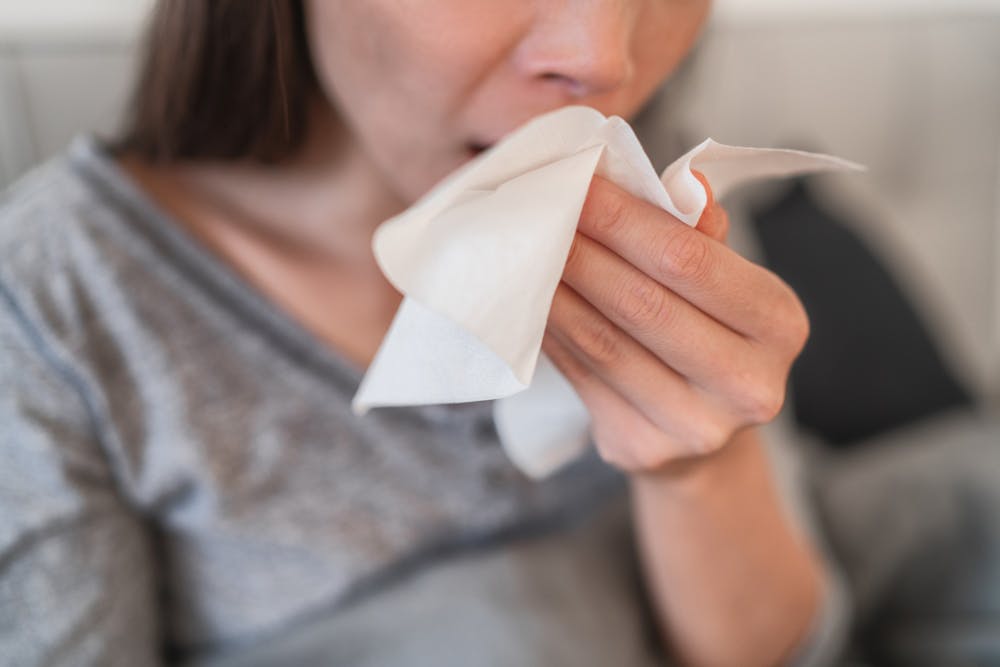By Richard Read - Los Angeles Times The U.S. Centers for Disease Control and Prevention acknowledged Monday that the coronavirus can spread through microscopic respiratory particles known as aerosols that float in the air for minutes or even hours before being inhaled
On its website, the CDC said that even people who followed social distancing guidelines have been infected through this type of transmission — and added a warning against frequenting crowded, poorly ventilated indoor spaces.
The acknowledgement comes after months of campaigning by independent experts and brings the agency into line with research on the role of aerosols in "superspreading events" such as a choir practice in Washington state that infected dozens of people and killed two.
But some researchers said the agency did not go far enough, because it maintains that the virus is still far more likely to spread through larger respiratory droplets that quickly fall on people in close vicinity.
Donald K. Milton, a University of Maryland environmental health professor and expert on aerosols, said Monday that the CDC was "slowly moving along in the right direction, but is not where I would quite like to see it."
He said that mathematical models show that aerosols carrying the virus are more apt to spread the disease than larger droplets spewed as projectiles, even when an infected person is less than 6 feet away.
"At close range, you're still going to see aerosol transmission dominant most of the time," he said. "Spitballs are much less frequent."
He said that means that masks — which the CDC has long recommended be worn when near others — are useful both indoors and outdoors for preventing the spread of the virus.
"Outdoor dining is associated with increased risk of getting COVID-19 because people are sitting there for a long time without a mask in one spot," he said.
Moving around when outdoors lowers the risk of inhaling aerosols and becoming infected, he said.
When the coronavirus began spreading in the United States early this year, the CDC advised people to stay at least 6 feet away from other people and wash their hands frequently in case they happened to touch a contaminated surface.
Later the agency said that contaminated surfaces played only a minor role in spreading the virus.
Researchers began following up on reports of superspreading incidents in which aerosols appeared to be the main culprit.
The scientists urged the CDC and the World Health Organization to acknowledge airborne transmission, but health officials were skeptical.
In July, after 239 researchers from 32 countries signed an open letter urging the WHO to accept the possibility that aerosols played a major role in spreading the virus, the international agency revised its guidelines to recommend that people avoid poorly ventilated, crowded spaces.
Still, the WHO maintains that aerosol transmission has not been definitively demonstrated.
On Sept. 18, the CDC revised its guidance without notice to say that the virus spread through aerosols, but withdrew the new advisory three days later, saying it was a draft of proposed changes posted by mistake.
CDC officials did not respond to requests for an interview Monday.
A letter written by Milton and five other researchers and published Monday by Science magazine cited "overwhelming evidence" that inhalation was "a major transmission route" for the coronavirus and cited an urgent need to define terms consistently across scientific fields.
Respiratory droplets, defined as larger than 100 microns, can be sprayed like tiny cannonballs and typically fall to the ground in seconds within 6 feet, the letter said.
But the letter said that aerosols — defined as particles smaller than 100 microns, less than the diameter of the average human hair — "can remain suspended in air for many seconds to hours, like smoke."
Milton said that tobacco smoke is an apt analogy to understand how tiny respiratory particles waft through the air.
"If somebody goes out for a smoke and they come in and you smell it on their breath, you're inhaling their exhaled breath," he said.
Milton said while the virus is most apt to spread through the air indoors, where aerosol can accumulate, it's possible that airborne transmission occurred at the Sept. 26 White House Supreme Court nomination ceremony for Judge Amy Coney Barrett.
The event included a large gathering outside in the Rose Garden and a smaller indoor reception. Photographs show that in both locations few people wore masks and that social distancing guidelines were not widely followed.
The CDC has the technical resources to conduct an investigation that could determine who infected whom, Milton said.
"It would be very interesting to know which way the wind was blowing in the Rose Garden," he said. "They were really close to each other, they were hugging each other, they were shaking hands. They were throwing all precautions to the wind, and the wind got them anyway."




